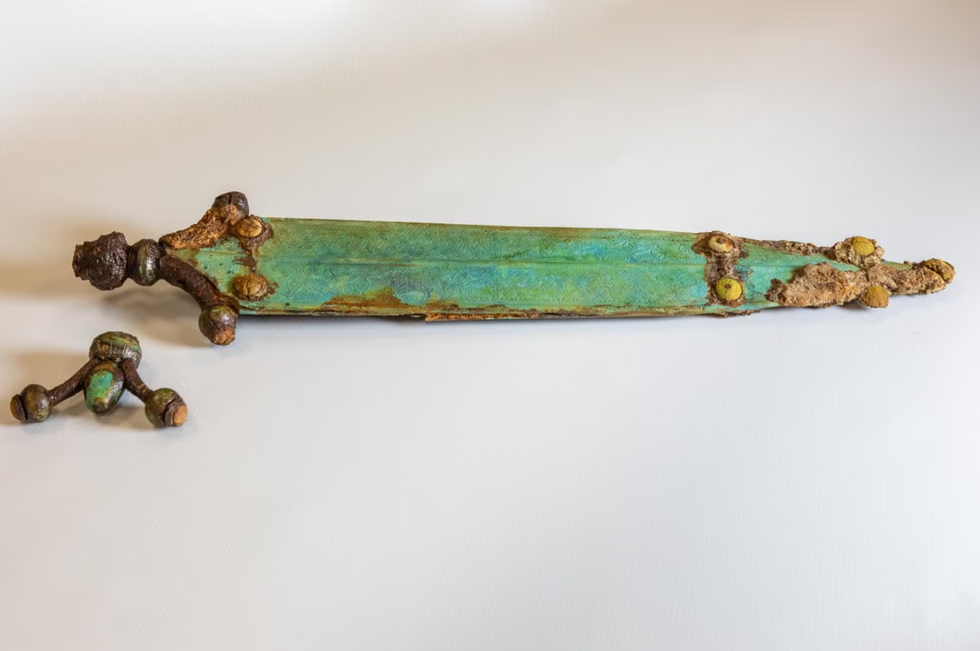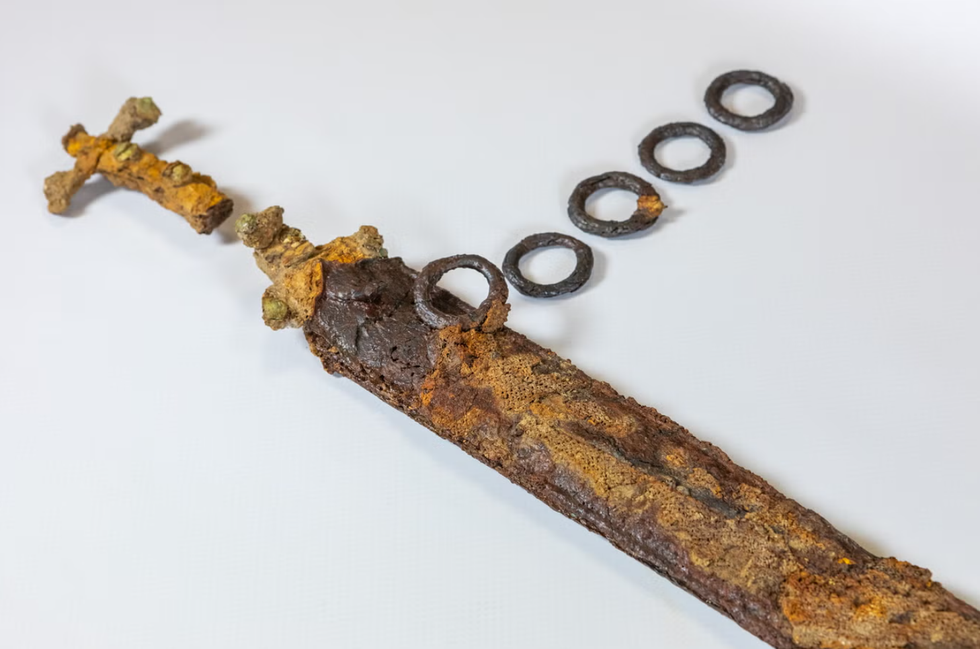Celtic sword unearthed after 2,300 years buried in necropolis as archaeologists reveal startling detail on blade

X-ray scans revealed inlays on the top of the blade
Don't Miss
Most Read
Archaeologists have unearthed a 2,300-year-old Celtic sword in France with remarkable decorative elements.
The ancient weapon features glass paste and swastika engravings, offering new insights into weaponry manufactured in ancient Europe.
The sword was discovered at a second Iron Age burial site, dating back to approximately the 4th century BC.
Scientists from the French National Institute of Preventive Archaeological Research (INRAP) have described it as "without a doubt, the most spectacular object of the necropolis".

The sword was discovered at a second Iron Age burial site
|Flore Giraud, Inrap
The burial site presented unusual characteristics, with no skeletal remains preserved due to the soil's acidity.
Despite this limitation, researchers uncovered numerous metal artefacts at the location.
These included copper alloy bracelets and decorated fibulae made of iron.
The most exceptional fibula out of the 18 found was embellished with a cabochon gemstone and decorated with a silver leaf motif.
Two swords still in their sheaths were among the most significant finds at the site.
After stabilising the artefacts, scientists examined the sword's distinctive features in detail.
The weapon's handle and the front plate of its sheath were crafted from copper alloy.
MORE ARCHAEOLOGY BREAKTHROUGHS:
Its sheath was adorned with ocelle decorations and several cabochon embellishments.
"At least two of them have swastika decorations and probably glass paste," the INRAP reported.
The sword featured a short, slender blade with an antenna handle made of iron.
X-ray scans revealed inlays on the top of the blade, including a round and crescent moon separated by a line.
Researchers believe the sword was likely created at the beginning of the 4th century BC.
The second sword discovered at the site was notably different, lacking any decoration. It was found with suspension rings that would have allowed it to be carried at the waist.

Rsearchers uncovered numerous metal artefacts at the location, including copper alloy bracelets
|Flore Giraud, Inrap
Interestingly, this sword still contained fabric fragments caught in the metallic oxidation at the back of its sheath.
Researchers suggest these fabric remnants may have come from the deceased's clothing, a shroud, or a case.
This weapon was also dated to the 4th century BC based on its size and typology.
Archaeologists additionally uncovered a small funerary vase decorated with punched patterns and painted headbands.
Experts have drawn comparisons between this burial site and other well-known locations across France.
"This necropolis can be compared to well-known sites in Champagne, in the Paris Basin, or in Burgundy," researchers noted.










